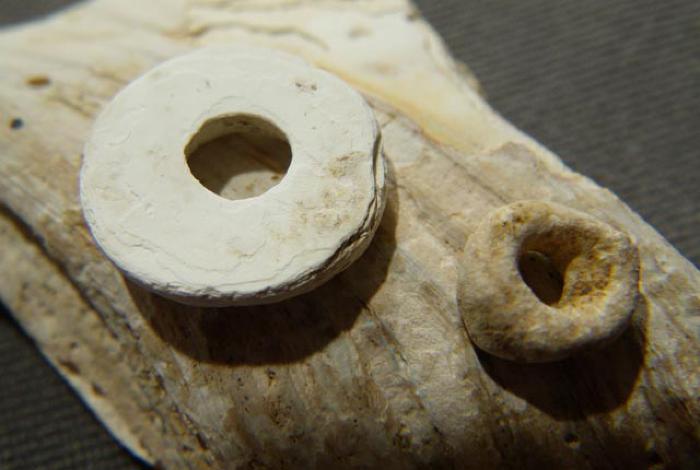Shell — Salaq

The Kodiak Archipelago has more than 2,400 miles of shoreline, much of it covered with intertidal organisms. Most beaches have dense concentrations of shellfish, marine invertebrates, and plants. The region’s rocky shores are home to thick patches of barnacles, mussels, chitons, limpets, snails, and sea urchins, while sandy beaches hold clams, cockles, and tellins. Only the exposed cobble beaches of Kodiak’s outer coast and areas with heavy freshwater drainage are devoid of intertidal fauna.
In addition to food, this abundance of shellfish provided Alutiiq people with raw material. In the prehistoric era, shells were used as cutting and scraping tools and fashioned into decorative beads. Some craftsmen made beads from the center column of whelk shells. Others cut shells bead from clamshells. A collection of worked shell pieces from the Uyak site in Larsen Bay illustrates the process of creating clamshell beads. First, the shell was broken into small pieces. These pieces were ground into circular disks with the aid of a sandstone abrader. The final step was to drill a hole in the center of the disk.
Some shells were particularly coveted for decoration. Alutiiq people obtained dentalium shells, the curved, white, tusk-shaped shells of scaphopods, in trade with the societies of southeast Alaska. They were used to decorate clothing and worn as earrings and nose pins and were considered extremely valuable. Historic sources indicate that a pair of delicate dentalium shells could be traded for an entire squirrel skin parka.
